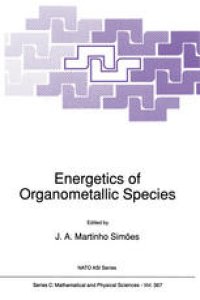
Ebook: Energetics of Organometallic Species
- Tags: Organometallic Chemistry, Inorganic Chemistry, Industrial Chemistry/Chemical Engineering
- Series: NATO ASI Series 367
- Year: 1992
- Publisher: Springer Netherlands
- Edition: 1
- Language: English
- pdf
An overview of modern organometallic thermochemistry, made by some of the most active scientists in the area, is offered in this book. The contents correspond to the seventeen lectures delivered at the NATO ASI Energetics of Organometallic Species (Curia, Portugal, September 1991), plus three other invited contributions from participants of that summer school. These papers reflect a variety of research interests, and discuss results obtained with several techniques. It is therefore considered appropriate to add a few preliminary words, attempting to bring some unity out of that diversity. In the first three chapters, results obtained by classical calorimetric methods are described. Modern organometallic thermochemistry started in Manchester, with Henry Skinner, and his pioneering work is briefly surveyed in the first chapter. The historical perspective is followed by a discussion of a very actual issue: the trends of stepwise bond dissociation enthalpies. Geoff Pilcher, another Manchester thermochemist, makes, in chapter 2, a comprehensive and authoritative survey of problems found in the most classical of thermochemical techniques - combustion calorimetr- applied to organometallic compounds. Finally, results from another classical technique, reaction-solution calorimetry, are reviewed in the third chapter, by Tobin Marks and coworkers. More than anybody else, Tobin Marks has used thermochemical values to define synthetic strategies for organometallic compounds, thus indicating an application of thermochemical data of which too little use has been made so far.
Why has the energetics of organometallic species become an area of recognized importance? What methods are available to obtain information on reaction enthalpies and bond `strengths'? What other methods are likely to be used in the future? Is the present thermochemical data bank satisfactory for our needs? How accurately can we estimate the energetics of organometallic reactions? Can theory offer reliable help? Which are the main problems to be tackled by the experimentalist?
These are some of the questions addressed in the present book, which contains contributions by most of the leading groups in the area of organometallic thermochemistry.